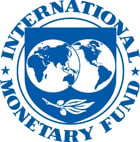
Typical street scene in Santa Ana, El Salvador. (Photo: iStock)
IMF Survey : IMF Sees Big Gains from Energy Subsidies Reform
March 27, 2013
- Estimates put cost of subsidies at $1.9 trillion in 2011
- Measures to protect poor are essential
- Reforms can remove impediments to economic growth
A new IMF paper urges governments the world over to reform subsidies affecting products ranging from coal to gasoline.

Nairobi, Kenya. Following reforms, electricity subsidies in Kenya fell from 1.5 percent of GDP in 2001 to zero in 2008 (photo: Tony Karumba/Newscom)
Improving Economic Growth
Subsidies are intended to protect consumers by keeping prices low. But many argue subsidies are inefficient and could be replaced with better means of protecting consumers in need. This, according to the IMF, is possible if governments undertake the right reform path, and will in the process also help alleviate budgetary pressures being faced by governments.
The IMF work was carried out by regional and fiscal affairs experts from across the organization. In an interview, Carlo Cottarelli, Director of the IMF’s Fiscal Affairs Department, Masood Ahmed, Director of the Middle East and Central Asia Department, and Antoinette Sayeh, Director of the African Department spoke about what the paper will mean for the IMF’s work in countries and for the countries themselves.
IMF Survey: Your department led the effort to produce the paper. What are the main results? Do the recommendations apply across all countries that maintain subsidies?
Cottarelli: Subsidies are a problem in practically every country in the world. Even where countries impose taxes on energy, they’re rarely high enough to account for all of the adverse effects of excessive energy consumption, including on the environment. Based on a new database for 176 countries, we estimate that subsidies in 2011 amounted to $1.9 trillion, the equivalent of about 2½ percent of world GDP, or 8 percent of all government revenues.
Since energy subsidies are pervasive and costly for governments to maintain, we see scope for reform not only in emerging market and developing countries, but also in advanced economies. The top three subsidizers across the world are the United States at $502 billion, China at $279 billion, and Russia at $116 billion. Clearly, when a country embarks on subsidy reform, there is a need to be mindful of possible adverse effects on the poor, and mitigating measures to protect the poor have to be built into the reform plan. This applies to all countries.
IMF Survey: Subsidies essentially lower the costs paid by energy consumers—a result that many might argue is beneficial, especially for the poor. Why is the IMF recommending reforms?
Cottarelli: Subsidies are expensive and ultimately must be paid by someone. This is of course true for any spending but there are several problems that are specific to energy subsidies. First, they are a very inefficient way of supporting the poor, as the rich consume more energy than the poor and therefore receive most of the benefits of the subsidies. In fact, on average, the richest 20 percent of households in low- and middle-income countries capture six times more in fuel subsidies than the poorest 20 percent. Governments, therefore, should make better use of the scarce ammunition in their fiscal arsenal for programs that more directly help the poor.
The effects of subsidies, however, go beyond their fiscal costs. They are also a major impediment to growth. For example, subsidies crowd out public spending that can boost growth, including on infrastructure, education, and health care. Cheap energy can also lead to overconsumption of energy, which aggravates environmental problems, such as pollution and climate change.
IMF Survey: The Middle East is an energy-rich region, yet many countries there continue to heavily subsidize energy. How do you see these countries benefiting from removing or reducing the subsidies?
Ahmed: In energy-rich countries, governments provide energy subsidies as a way of sharing the resource wealth. While this is a straightforward way of distributing part of a country’s riches, it is not fair because if we look at who actually benefits from those subsidies, it’s clear that the bulk of the benefit goes to the better-off, who use energy the most—people with automobiles, air-conditioned houses, and electrical appliances. And, in addition to the harmful consequences that Carlo already mentioned, they tend to encourage capital-intensive industries to the detriment of employment-intensive activities, which is important even in countries that are large energy producers and are less concerned about the budgetary implications of energy subsidies. Channeling some of the resources freed up by subsidy reform to more productive public spending on health care and education, and to addressing infrastructure gaps could help boost job-creating growth over the long run without increasing a country’s debt. Finally, subsidies encourage greater consumption and thus greater extraction—with fewer resources left for future generations.
IMF Survey: How will the findings in the paper impact the IMF’s work across the Middle East? Are there significant obstacles to implementing subsidies reforms in the region?
Ahmed: Energy subsidies are costly and weigh heavily on already stretched government budgets in a number of energy-importing countries across the region, including Egypt and Jordan. At the same time, funds for health care, education, and investments are very limited. Our advice is to replace generalized subsidies with more cost-effective, targeted forms of social protection. Doing so is a complex process, both technically and politically. In a number of countries, attempts to phase out subsidies have been reversed after meeting resistance from vested interests or in the face of large oil price swings. Resistance also reflects a lack of confidence by part of the population that governments will use the savings from subsidy reform wisely.
To build momentum for reform, strong communications and overall transparency are key. Moreover, it is crucial that those who are hardest hit by the removal of subsidies be immediately compensated through more targeted social protection. We saw that when the government of Mauritania introduced a new diesel price formula in May 2012, it included such targeted measures as an explicit component of the reform program. The reform was met with relatively limited opposition, despite a price increase of more than 20 percent over a five-month period. Similarly, in Iran subsidy reform was preceded by extensive consultation with stakeholders and an effective public relations campaign.
IMF Survey: While it is true that energy subsidies benefit both rich and poor energy consumers, the poor would be hit harder by the reduction or removal of subsidies. How can the poor be protected in these cases?
Sayeh: As Carlo and Masood have already touched upon, removal of energy subsidies needs to be accompanied by targeted measures that compensate those most in need from the resulting higher prices. In principle, a conditional cash transfer targeted to the income groups most in need is the best way to go—as both Mozambique and Gabon have done. However, unless a scheme is already in place, this may not be feasible in the short run because of administrative constraints. In that case, a carefully chosen set of existing programs can be expanded, possibly with some improvements in targeting effectiveness. These could include an increase in public-transport buses, as in Ghana; food distribution programs to feed the most vulnerable, as in Namibia; or the creation of youth and women’s employment programs, as in Nigeria.
Alternatively, subsidies can be maintained for those items heavily used by the poor, for example, kerosene, or for consumption of electricity below a specified threshold. For example, Nigeria maintained its kerosene subsidy when it reduced its gasoline subsidy. There are also ways to differentiate between low-income and higher-income consumers, for example, when levying taxes on electricity, or by helping lower-income customers finance connection costs, as in Kenya, and these kinds of measures can also help protect low-income households against price increases.
IMF Survey: Are there specific sectors where governments in Africa tend to subsidize energy? How will the IMF’s work in the region change in light of the findings in the paper?
Sayeh: Fuel subsidies are much more prevalent in oil exporting countries, while large electricity subsidies are more or less generalized in sub-Saharan Africa. Regarding the latter, subsidies have discouraged private investment and severely constrained the ability of state-owned utilities from investing in new electricity capacity. As a result, sub-Saharan Africa’s per capita energy production has not increased since the mid-1980s, adversely affecting competitiveness. Without a significant increase in power generation capacity, sub-Saharan Africa cannot maintain its current economic growth rates. Still, state-owned utilities typically face high costs to produce electricity, which is the primary driver of the subsidies, and, therefore, electricity subsidy reduction is not just about raising prices paid by consumers of electricity, but also requires a comprehensive strategy to reduce inefficiencies, improve collection rates, and increase scale economies, including by promoting regional trade in power.
Relatively low levels of public debt in some countries provide an opportunity for significant investment in cheaper sources of energy production. The IMF needs to continue to assist country authorities in assessing the true costs—fiscal costs as well as those related to competitiveness and growth—as well as who truly benefits from energy subsidies, and make them fully transparent. That would help inform people’s decisions about spending priorities and how far reforms need to go.
IMF Survey: Is there a “best practice” in terms of implementing energy subsidies reform?
Cottarelli: There is no single recipe for successful subsidy reform. That said, after looking at the reform experiences in 19 countries, we found that there are six key elements for success. The first is to implement a comprehensive reform plan, which should involve establishing clear long-term objectives, such as achieving full price liberalization and improving the quality of service. The second is a far-reaching communications strategy and consultation with stakeholders. The third is appropriately phased and sequenced price increases, which allows time for households and governments to adjust their energy consumption. The fourth is to implement measures to protect the poor. The fifth is improvements in the efficiency of state-owned enterprises to help reduce their fiscal burden. And the final ingredient is to depoliticize the setting of energy prices, which is needed to make durable reforms.


